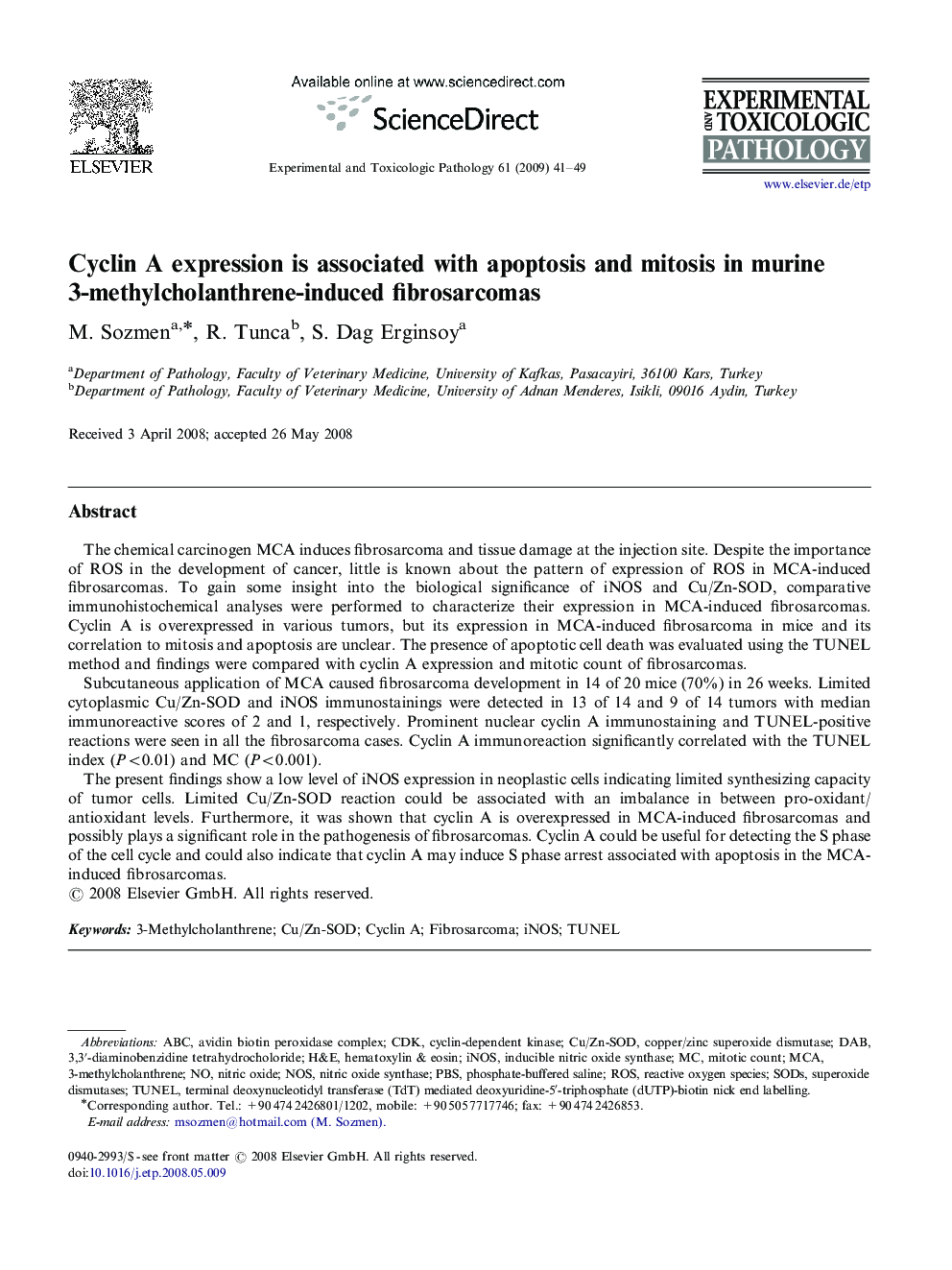| Article ID | Journal | Published Year | Pages | File Type |
|---|---|---|---|---|
| 2499090 | Experimental and Toxicologic Pathology | 2009 | 9 Pages |
The chemical carcinogen MCA induces fibrosarcoma and tissue damage at the injection site. Despite the importance of ROS in the development of cancer, little is known about the pattern of expression of ROS in MCA-induced fibrosarcomas. To gain some insight into the biological significance of iNOS and Cu/Zn-SOD, comparative immunohistochemical analyses were performed to characterize their expression in MCA-induced fibrosarcomas. Cyclin A is overexpressed in various tumors, but its expression in MCA-induced fibrosarcoma in mice and its correlation to mitosis and apoptosis are unclear. The presence of apoptotic cell death was evaluated using the TUNEL method and findings were compared with cyclin A expression and mitotic count of fibrosarcomas.Subcutaneous application of MCA caused fibrosarcoma development in 14 of 20 mice (70%) in 26 weeks. Limited cytoplasmic Cu/Zn-SOD and iNOS immunostainings were detected in 13 of 14 and 9 of 14 tumors with median immunoreactive scores of 2 and 1, respectively. Prominent nuclear cyclin A immunostaining and TUNEL-positive reactions were seen in all the fibrosarcoma cases. Cyclin A immunoreaction significantly correlated with the TUNEL index (P<0.01) and MC (P<0.001).The present findings show a low level of iNOS expression in neoplastic cells indicating limited synthesizing capacity of tumor cells. Limited Cu/Zn-SOD reaction could be associated with an imbalance in between pro-oxidant/antioxidant levels. Furthermore, it was shown that cyclin A is overexpressed in MCA-induced fibrosarcomas and possibly plays a significant role in the pathogenesis of fibrosarcomas. Cyclin A could be useful for detecting the S phase of the cell cycle and could also indicate that cyclin A may induce S phase arrest associated with apoptosis in the MCA-induced fibrosarcomas.
